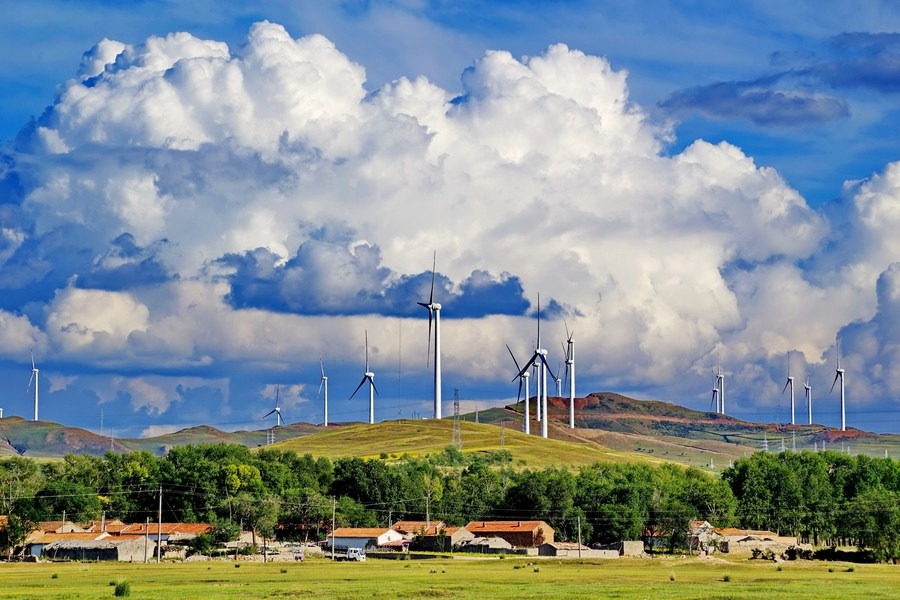Wetland lifeline
New protection law will provide a more effective line of defense for these critical ecosystems


Wetlands are among the most productive ecosystems in the world. They provide critical functions such as coastal flood defenses, addressing climate change, acting as a habitat for biodiversity, and protecting and improving water quality. China has 53.6 million hectares of wetlands, accounting for 10 percent of the world's total wetland area. In December 2021, China enacted its first Wetland Protection Law, which will come into effect in June.
The new law marks a huge improvement in the legal protection of wetlands. Previously, provisions for wetland protection were scattered in various laws and regulations, without providing clear definitions or specific protective measures.
The new law adopts a widely accepted international definition of wetlands, in line with the Ramsar Convention on Wetlands. This year marks the 30th anniversary of China joining the convention, and China is scheduled to host the 14th Conference of Parties of the Ramsar Convention in November 2022 in Wuhan.
Wetlands include lots of areas such as marshes, peatlands and water, either static or flowing, fresh, brackish or salt, including shallow marine areas. Traditionally, such areas were of limited use to humans, and therefore much of them have been converted to dry land, without considering their original benefits.
China's new Wetland Protection Law has clear provisions for public participation and information disclosure. The law specifies that "governments at all levels and their relevant departments shall disclose information related to wetland protection and accept supervision from the public". It emphasizes that organizations prescribed by the law have the right to request offenders to assume responsibility for wetland restoration and compensate for damages and related costs. This is aligned with the public interest litigation mechanism stipulated in the Environmental Protection Law. With China's environmental NGOs and public interest prosecution departments, these provisions will provide a major boost for China's wetland protection.
The law addresses climate change by means of special protection for mangroves and peat bogs. Mangrove wetlands provide remarkable environmental services such as coastal flood protection, sustaining coastal biodiversity, and mitigating greenhouse gas emissions. Conversion and occupation of mangrove wetlands is strictly prohibited under the new law. Only in rare circumstances, major national projects or disaster prevention projects may cross mangrove wetlands, but even in those cases scientific assessments are required, and such projects must also carry out compensatory mangrove restoration measures.
Peatlands can be either a carbon source or a carbon sink, as they contain decomposing plant matter in wet conditions. They have the highest carbon storage potential per unit of all terrestrial ecosystems. Previously, peatlands were often treated as wastelands or exploited for the extraction of raw materials. The new law prohibits the extraction of peat or groundwater, or the storing and discharging of water from any peatland, unless it is for disaster prevention or mitigation.
The new Wetland Protection Law contains harsh penalties, with fines up to 10,000 yuan ($1,575) per square meter for illegal wetland reclamation. In previous provincial regulations, fines could be as low as 2 yuan per square meter.
Some recent cases have highlighted the need to better protect coastal wetlands. For example, last month a local government in South China's Hainan province issued a formal decision that requires property developer Evergrande to demolish buildings with a total floored area of over 400,000 square meters on a man-made island in the province. The development-Ocean Flower Island-occupies 800 hectares of coastal space, which is located inside a nature reserve, and is also close to a coral reef reserve and a mangrove reserve. In 2017, a Central Environmental Inspection pointed out that Ocean Flower Island project ruined the ecology to make profits. Another important case regarding coastal wetlands is ongoing in East China's Jiangsu province, where an NGO argues that a large coastal development project threatens to affect intertidal mud flats, which are a key habitat for various endangered bird species.
On top of the new Wetland Protection Law, just last month the Supreme People's Court and the Supreme People's Procuratorate jointly issued a judicial guidance document which clarifies under what conditions courts may order a project or policy to be halted. Injunctions are a powerful tool to prevent environmental damage from occurring in the first place. A typical example would be where a construction project may cause imminent, irreversible damage to an ecosystem. A court may decide to issue a temporary halt to such a project in order to prevent the possible damage from occurring while the case is being considered.
With the newly enacted Wetland Protection Law and the Judicial Interpretation on the Use of Injunctions in Environmental Cases, China will be able to better protect its wetlands and step up nature-based solutions to climate change and biodiversity protection.
Jiang Boya is a nature and climate lawyer at environmental law organization ClientEarth. Dimitri de Boer is chief representative for China of ClientEarth and team leader of the EU-China Environment Project. The authors contributed this article to China Watch, a think tank powered by China Daily. The views do not necessarily reflect those of China Daily.
Contact the editor at editor@chinawatch.cn


































